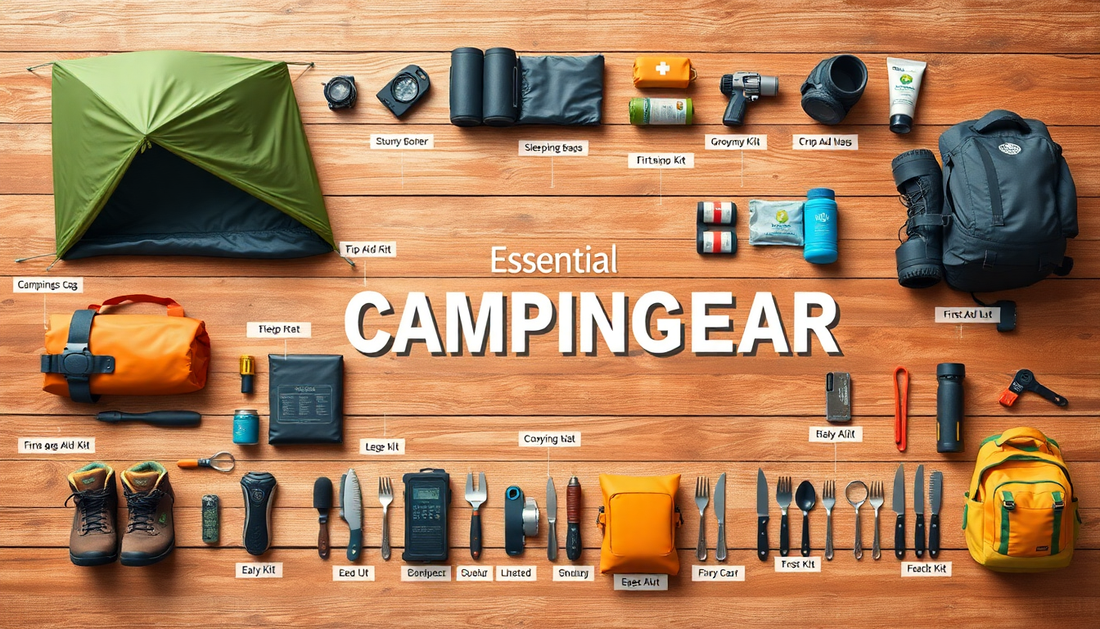
The Ultimate Camping Checklist (Don't Forget These!)
Embarking on a camping adventure is an exhilarating experience that allows you to immerse yourself in the great outdoors and create unforgettable memories. However, to ensure a smooth and enjoyable trip, it's crucial to be well-prepared. In this comprehensive guide, we'll explore the ultimate camping checklist, covering all the essential items you'll need to make your outdoor excursion a resounding success.
Camping Essentials
Shelter and Sleeping Gear
- Tent: Choose a sturdy, weatherproof tent that can accommodate the size of your group. Consider factors like ventilation, weight, and ease of setup.
- Sleeping bag: Select a sleeping bag rated for the expected temperature range of your camping destination. Opt for a bag that provides warmth and comfort.
- Sleeping pad or air mattress: These provide insulation and cushioning, ensuring a good night's sleep.
- Camping pillow: A compact, lightweight pillow can make a significant difference in your comfort level.
Cooking and Eating Supplies
- Camping stove and fuel: A portable stove allows you to cook hot meals and boil water, enhancing your camping experience.
- Cookware: Bring a pot, pan, utensils, and any other necessary cooking equipment.
- Plates, bowls, cups, and silverware: Durable, reusable options are preferred to minimize waste.
- Cooler and ice: Keep your perishable food and drinks fresh and cold.
- Water bottles and hydration packs: Staying hydrated is crucial, especially during outdoor activities.
Lighting and Power
- Flashlights or headlamps: These are essential for navigating in the dark and setting up camp.
- Lanterns: Provide ambient lighting for your campsite.
- Battery packs or portable chargers: Keep your devices powered up during your trip.
Navigation and Communication
- Compass and map: Ensure you can find your way, even in unfamiliar terrain.
- GPS device or smartphone with a navigation app: Helpful for tracking your location and planning routes.
- Walkie-talkies or satellite communicator: Maintain contact with your group, especially in areas with limited cell coverage.
First Aid and Safety
- First aid kit: Include bandages, antiseptic, medications, and any necessary personal items.
- Emergency whistle and fire starter: These can be lifesavers in case of emergencies.
- Sunscreen and bug spray: Protect yourself from the elements.
- Pocket knife or multi-tool: A versatile tool for various tasks.
Clothing and Accessories
- Appropriate clothing: Pack layers, including moisture-wicking base layers, insulating mid-layers, and weatherproof outer layers.
- Sturdy, comfortable hiking boots or shoes: Ensure proper foot support and traction.
- Hat, gloves, and socks: These can make a significant difference in your comfort level.
- Rain jacket and poncho: Be prepared for unexpected weather changes.
Campsite Setup and Organization
Proper campsite setup and organization can greatly enhance your camping experience. Here are some tips to consider:
Choosing a Campsite
- Look for level, well-drained ground with access to water sources and shade.
- Avoid setting up near dead trees or branches that could fall.
- Respect any designated camping areas or regulations.
Tent Placement
- Choose a spot that is protected from the wind and elements.
- Ensure the tent is level and secure, with guy lines properly anchored.
- Leave enough space between tents for privacy and easy movement.
Campfire Safety
- Familiarize yourself with local fire regulations and obtain any necessary permits.
- Clear a safe area for the fire pit, ensuring it's away from flammable materials.
- Keep a water source nearby and have a plan for extinguishing the fire.
Campsite Organization
- Designate areas for cooking, eating, and relaxing to maintain a tidy and efficient campsite.
- Use storage containers or bags to keep your gear organized and protected from the elements.
- Establish a system for waste management and leave no trace.
Packing Tips and Tricks
Efficient packing can make a significant difference in the overall success of your camping trip. Consider the following tips:
Pack Light
- Prioritize essential items and leave non-essential items at home.
- Opt for multi-purpose and compact gear to minimize the weight and volume of your pack.
Utilize Compression Sacks
- Compression sacks can significantly reduce the size of your sleeping bag, clothes, and other bulky items.
- This allows you to pack more efficiently and save space in your backpack or car.
Label and Organize
- Use clear labels or color-coding to identify the contents of your bags and containers.
- This will make it easier to find what you need quickly, especially in the dark or during inclement weather.
Create a Packing Checklist
- Develop a comprehensive packing checklist to ensure you don't forget any essential items.
- Refer to the list as you pack and unpack to stay organized throughout your trip.
Conclusion
Embarking on a camping adventure requires thorough preparation to ensure a safe and enjoyable experience. By following this ultimate camping checklist, you'll be well-equipped to tackle any challenge that comes your way, from setting up a cozy shelter to preparing delicious meals. Remember, the key to a successful camping trip is being proactive and leaving no stone unturned. Happy camping!


